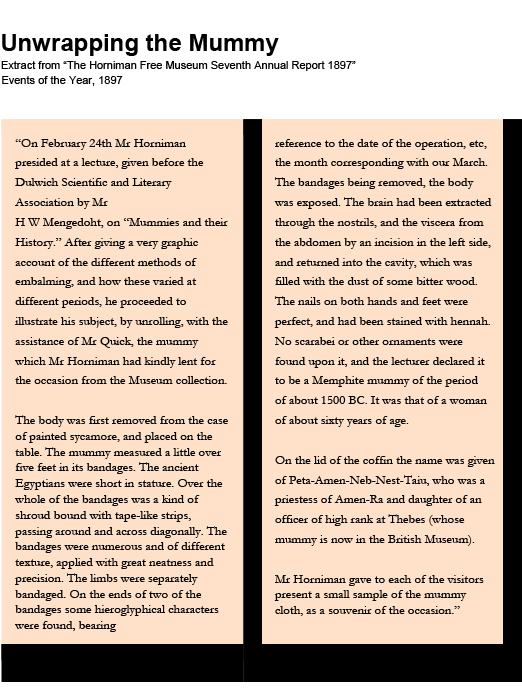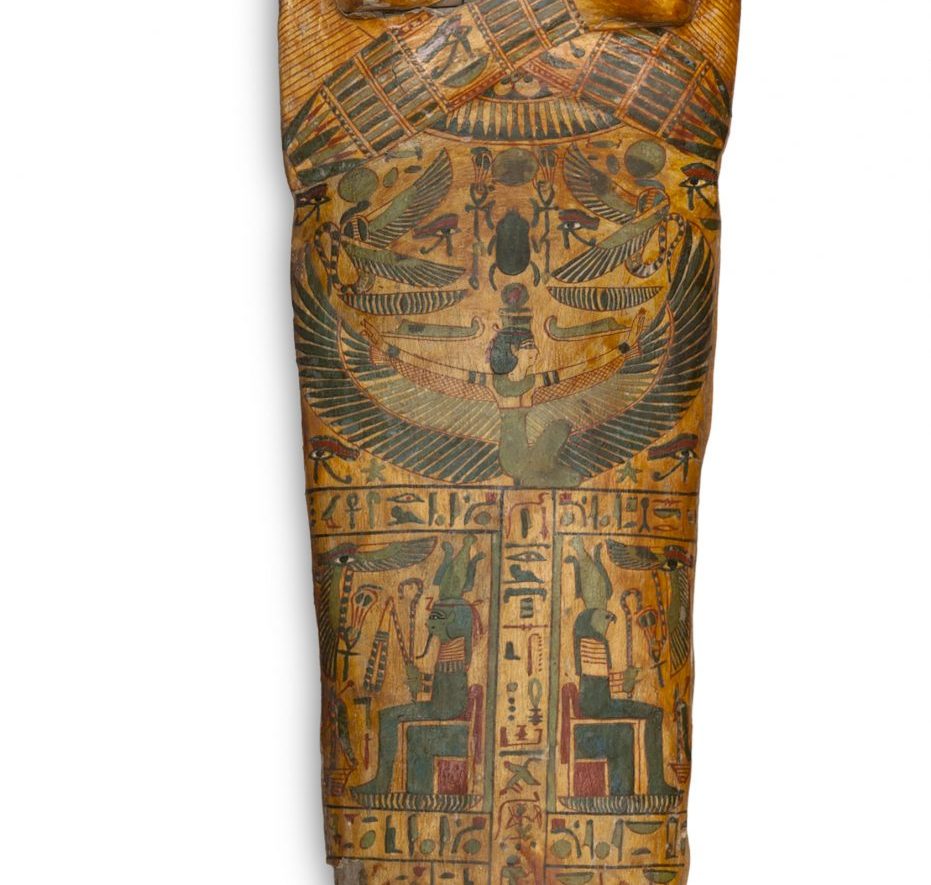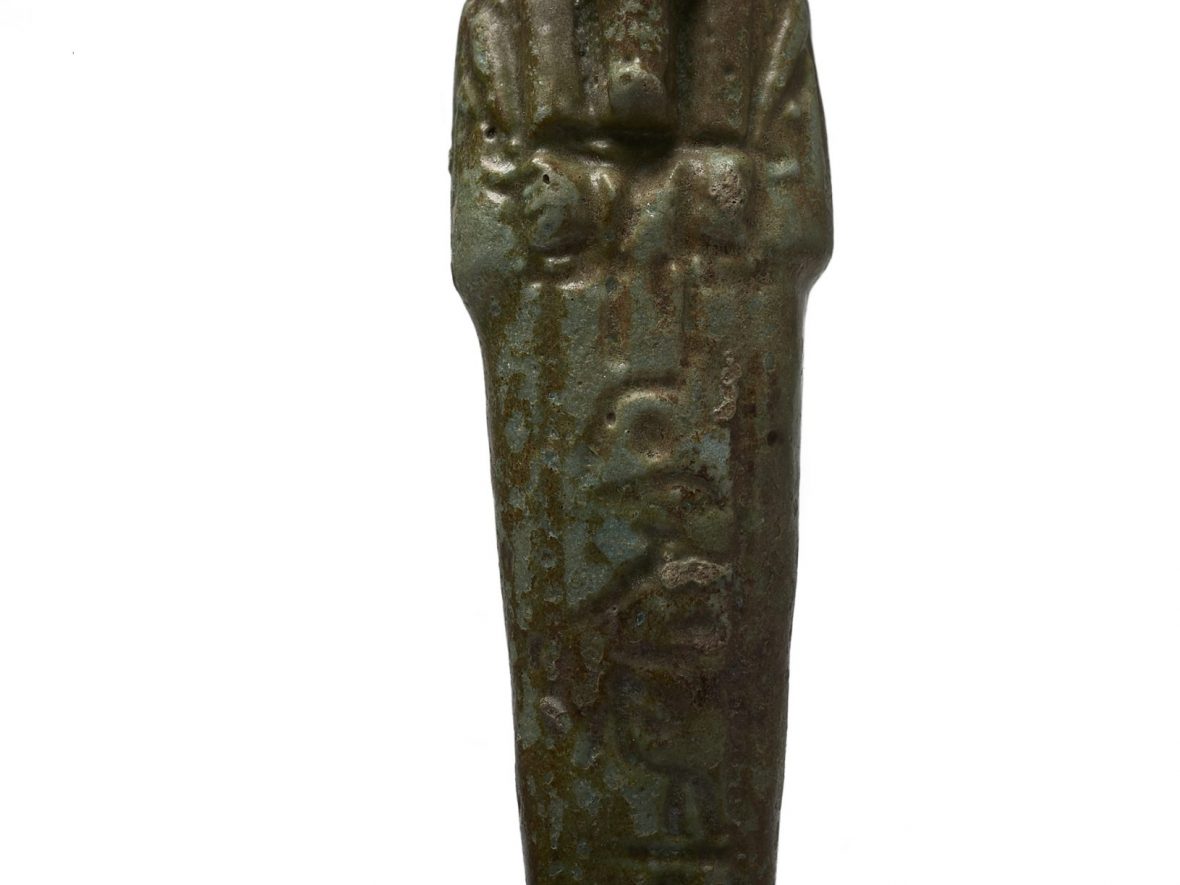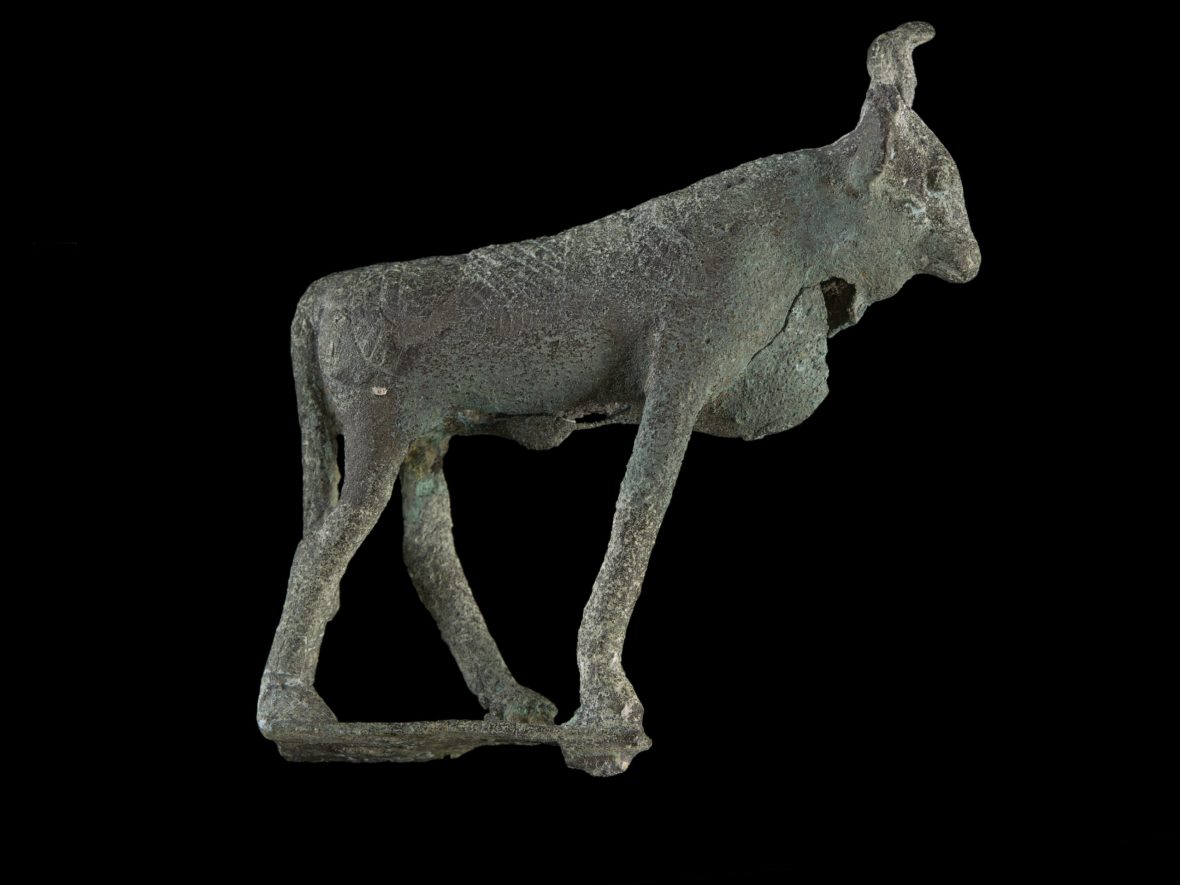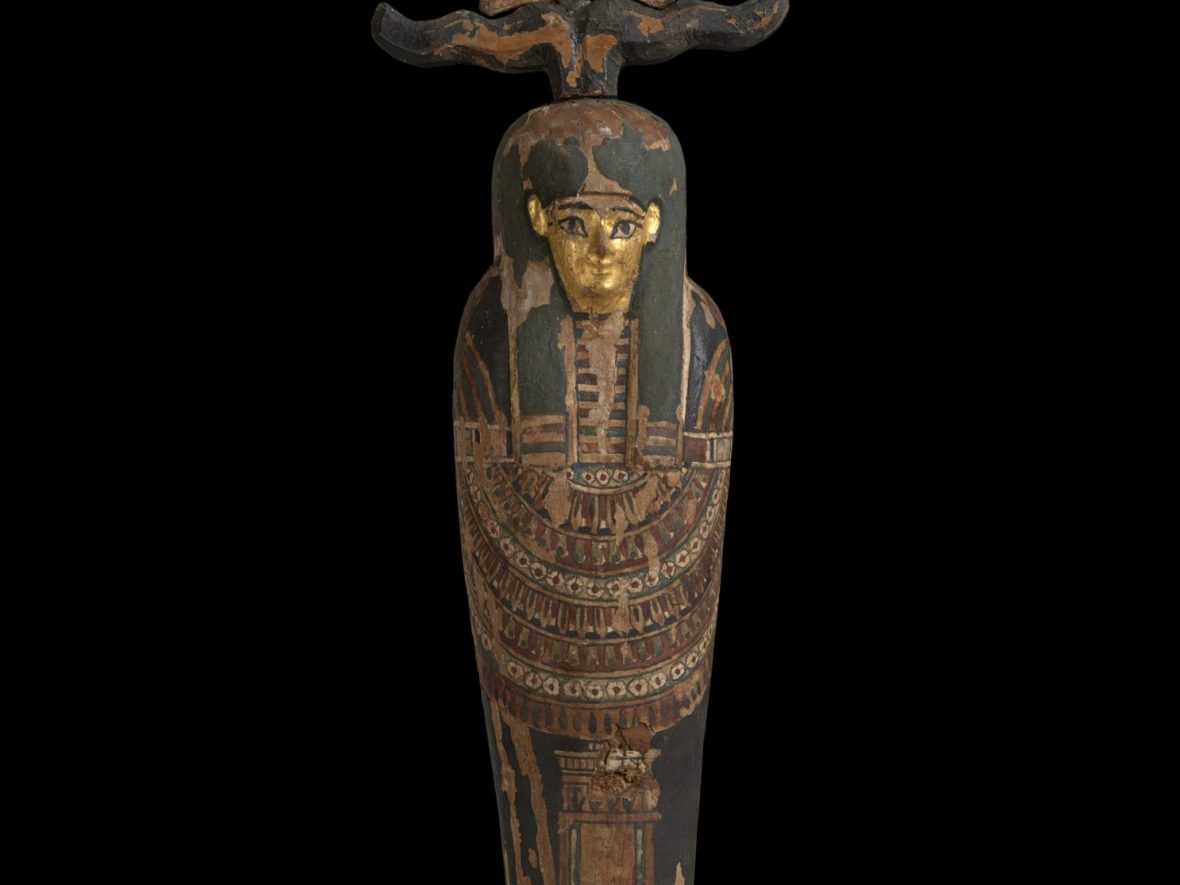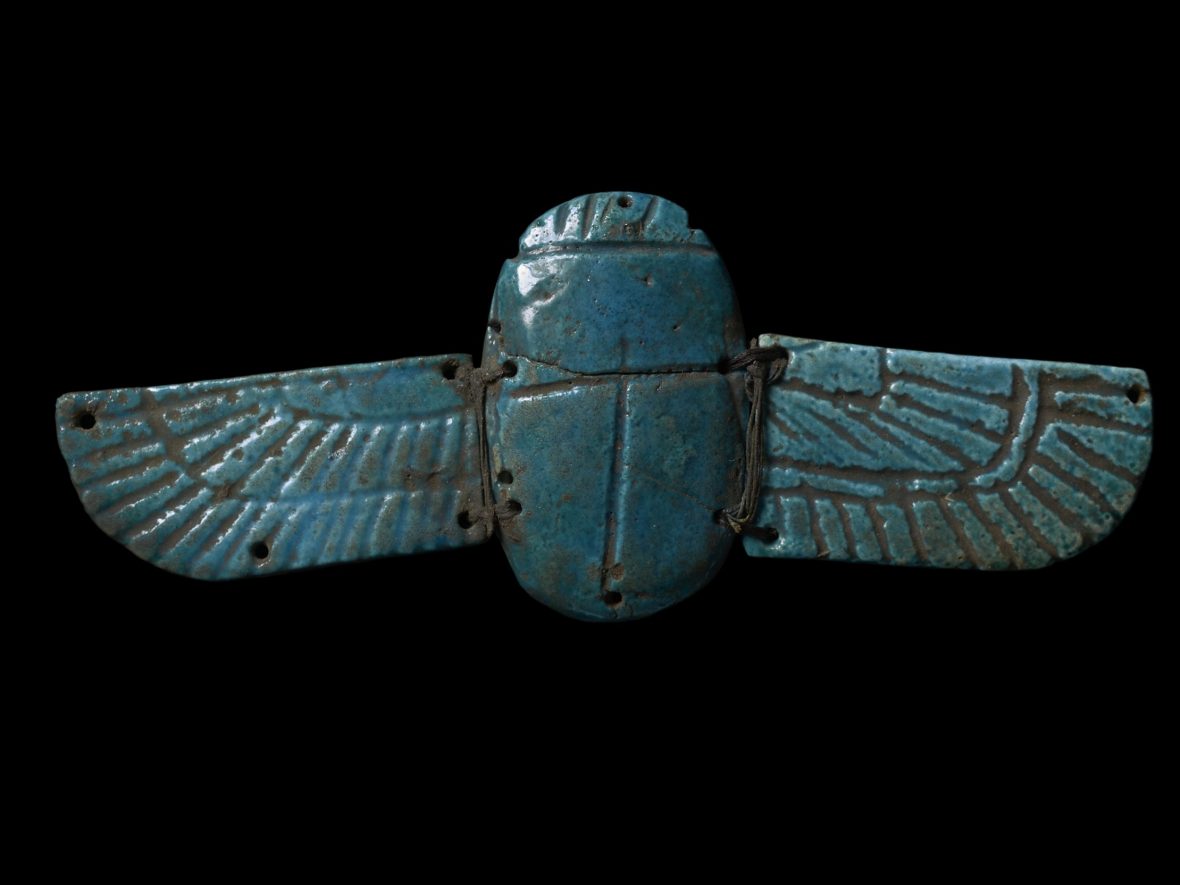Ancient Egypt
Explore some of the Ancient Egyptian collection at the Horniman in this learning resource.
- Use images from objects located in different galleries and in the Gardens to create a challenge or simple trail through the Museum to find specific objects or places.
- Use object images to encourage independent research, for instance, find out and write down three facts about an object or group of objects. Alternatively, give facts or clues and challenge your pupils to identify mystery objects.
- Set an alphabetical challenge i.e. find or draw 26 objects one for each letter of the alphabet.
- Create a sketchbook challenge.

A Difficult History
This extract from “The Horniman Free Museum Seventh Annual Report 1897” gives an insight into how times have changed since the days of Frederick Horniman (the founder).
It describes a lecture given in 1897 about a mummified ancient Egyptian person that Mr. Horniman used in a lecture. During the lecture, the person was unwrapped and described in front of an audience of people. Read it to find out what the guests witnessed and how the mummified person was treated.
What do you think has changed about the way that ancient artefacts are handled and studied today?
It describes a lecture given in 1897 about a mummified ancient Egyptian person that Mr. Horniman used in a lecture. During the lecture, the person was unwrapped and described in front of an audience of people. Read it to find out what the guests witnessed and how the mummified person was treated.
What do you think has changed about the way that ancient artefacts are handled and studied today?
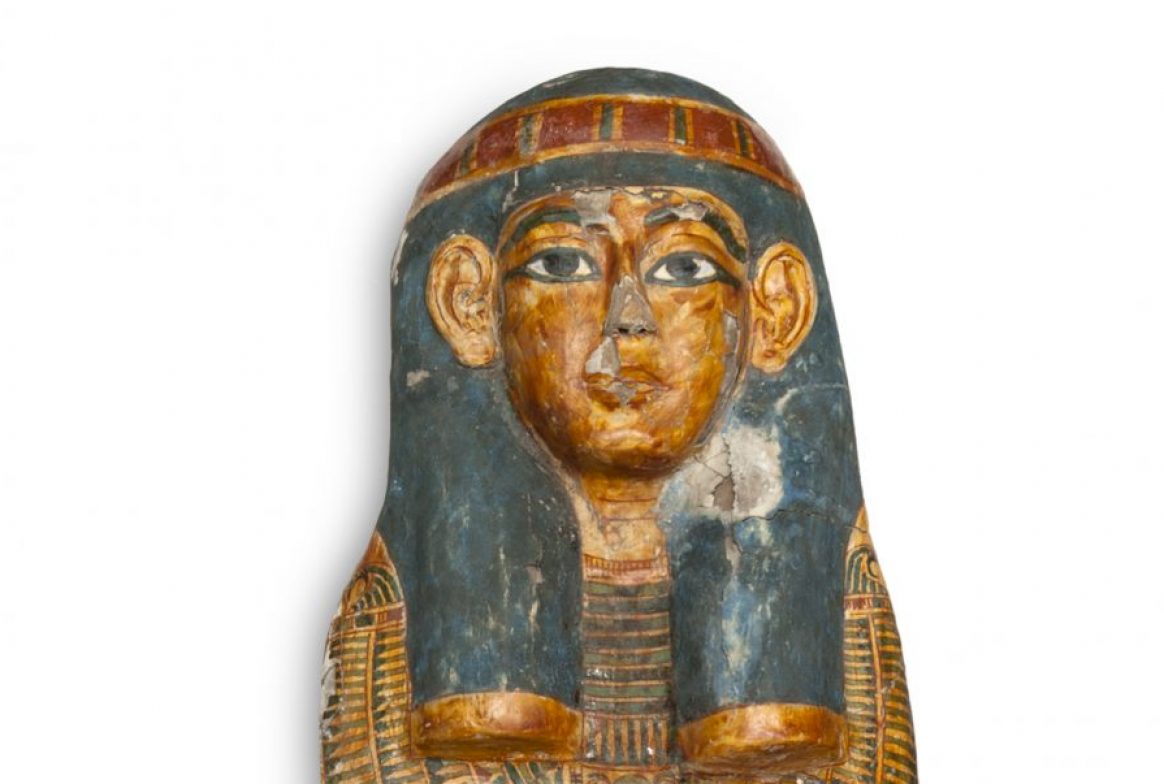
Inner Coffin
Mr. Horniman visited Egypt in 1896 to see the Egypt Exploration Fund that Howard Carter worked for. Mr. Horniman was shown around the Temple of Hatshepsut at Deir-el-Bahri. Impressed by the Fund’s work, he made a donation, and was gifted this coffin, taken from a person's tomb, in return.
The wooden inner lid features important religious icons such as the central winged scarab beetle and eye of Horus, to protect the person who was once inside the coffin. The winged goddess below is possibly Isis. The two figures lower down are Osiris, right and Horus, left. The two kneeling women below are possibly Isis and Nephthys. Nephthys was sister to Isis and Osiris, and protected the soul. Often shown together, Egyptologists suggest that Nephthys was a mirror image of Isis; dark versus light.
How do you think the ancient Egyptian person that this coffin once belonged to would feel about it being taken to London, and put on display in a Museum?
The wooden inner lid features important religious icons such as the central winged scarab beetle and eye of Horus, to protect the person who was once inside the coffin. The winged goddess below is possibly Isis. The two figures lower down are Osiris, right and Horus, left. The two kneeling women below are possibly Isis and Nephthys. Nephthys was sister to Isis and Osiris, and protected the soul. Often shown together, Egyptologists suggest that Nephthys was a mirror image of Isis; dark versus light.
How do you think the ancient Egyptian person that this coffin once belonged to would feel about it being taken to London, and put on display in a Museum?
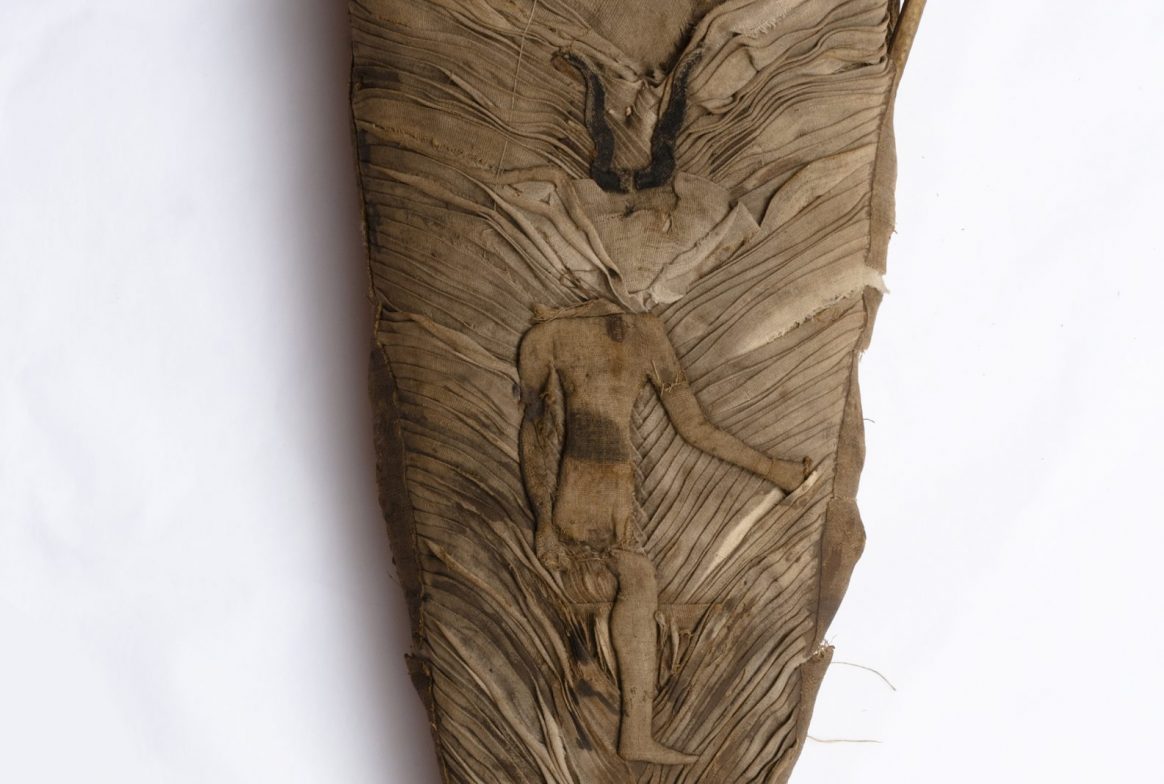
Mummified Ibis
In ancient Egypt, some animals were mummified as a sign of respect and devotion to important gods from people's religion. This mummified ibis bird has been skilfully wrapped in many layers of bandages.
Thoth, the scribe and god of wisdom and learning, is sometimes shown on the wrappings of mummified animals, and is often depicted with the head of an ibis. In some pictures Thoth can be seen recording the result of the weighing of the heart ceremony on the deceased’s journey to the afterlife.
Can you make out an image on the outside of this mummified bird's bandages? Who might it be?
Thoth, the scribe and god of wisdom and learning, is sometimes shown on the wrappings of mummified animals, and is often depicted with the head of an ibis. In some pictures Thoth can be seen recording the result of the weighing of the heart ceremony on the deceased’s journey to the afterlife.
Can you make out an image on the outside of this mummified bird's bandages? Who might it be?

Mummified Cat
Cats were important in ancient Egypt, both as pets and working animals who kept the grain stores free of mice. To ancient Egyptians, cats were sacred because they were associated with the goddess Bastet, who was half woman, half cat. Dreaming about a cat was believed to be an omen for a good harvest.
Cats were treated with great respect and were protected by laws. What animals are important to you and why?
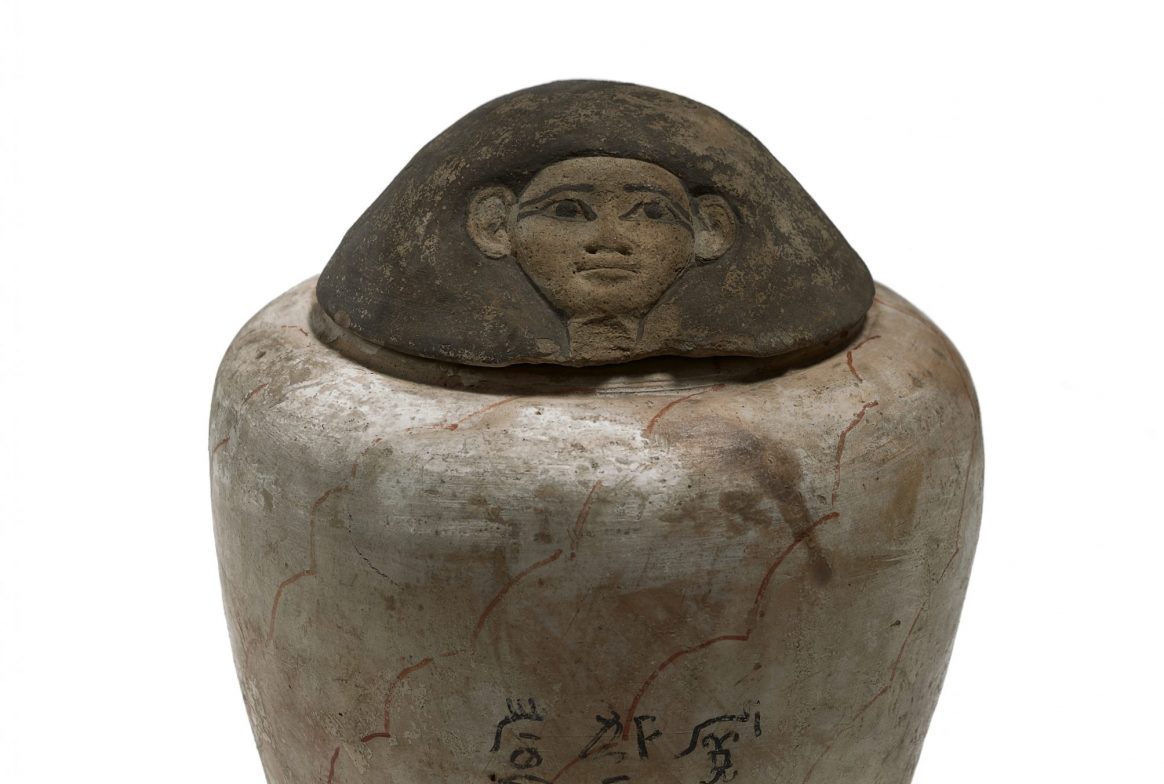
Canopic Jar
This canopic jar is made from alabaster and has the head of Imsety (one of the four sons of Horus), who guarded the liver of a mummified person.
Mummification was a complicated scientific process that changed a lot over time and was practiced in different ways by different people. By 2000 BC a person's lungs, stomach and intestines were often removed during the mummification process and put into canopic jars. 1,000 years later, it was commen for a person's organs to be carefully wrapped an placed back inside a person's body.
Empty, symbolic canopic jars were sometimes put into the tombs with the deceased too. This canopic jar bears the name Nessi ta-nub, the prophet of Ammon. Another three canopic jars were often used too, showing the head of a baboon, falcon and jackal; which gods do these animal heads represent?
Mummification was a complicated scientific process that changed a lot over time and was practiced in different ways by different people. By 2000 BC a person's lungs, stomach and intestines were often removed during the mummification process and put into canopic jars. 1,000 years later, it was commen for a person's organs to be carefully wrapped an placed back inside a person's body.
Empty, symbolic canopic jars were sometimes put into the tombs with the deceased too. This canopic jar bears the name Nessi ta-nub, the prophet of Ammon. Another three canopic jars were often used too, showing the head of a baboon, falcon and jackal; which gods do these animal heads represent?
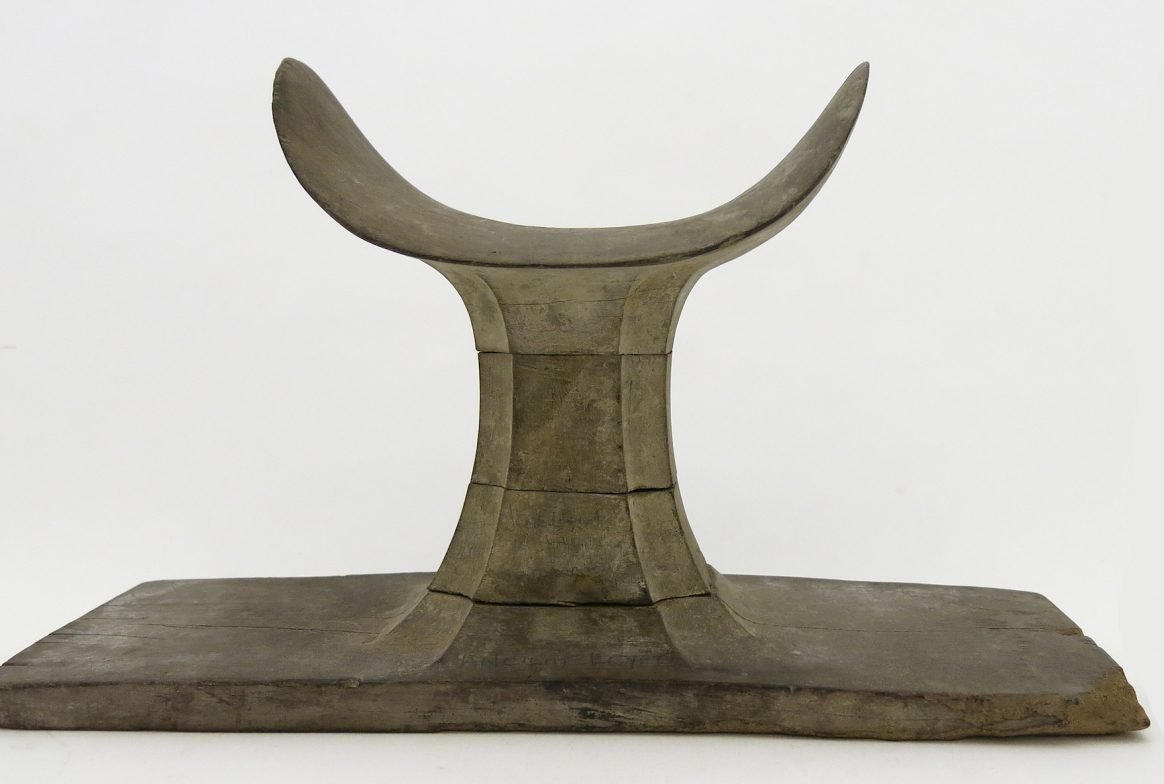
Wooden Headrest
Headrests like this are not restricted to Ancient Egypt and can be found in some countries today. For comparison, two headrests from Fiji are displayed in the Oceania Encounter of the World Gallery.
For the Ancient Egyptians, over time such headrests became more than just practical objects for sleeping on. According to The Book of the Dead, they became linked to protecting a mummy from evil forces, and small headrest-shaped amulets have been found between layers of mummy wrappings.
Headrests have been found in tombs from the beginning of the Old Kingdom (2613 – 2160 BC) through to the Ptolemaic period (332 – 32 BC).
Do you think it looks comfortable?
For the Ancient Egyptians, over time such headrests became more than just practical objects for sleeping on. According to The Book of the Dead, they became linked to protecting a mummy from evil forces, and small headrest-shaped amulets have been found between layers of mummy wrappings.
Headrests have been found in tombs from the beginning of the Old Kingdom (2613 – 2160 BC) through to the Ptolemaic period (332 – 32 BC).
Do you think it looks comfortable?
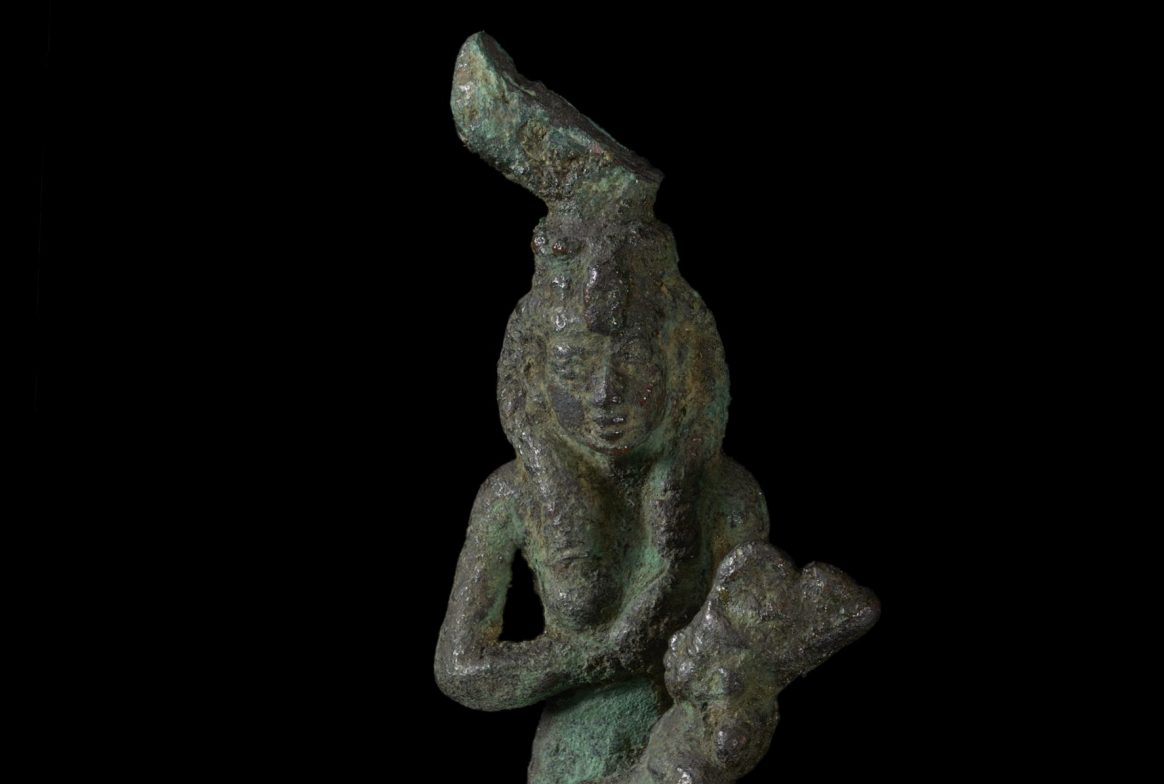
Isis and Horus Figurine
This figurine is made of copper alloy. The image of Isis nursing her son Horus was a powerful symbol for the Ancient Egyptians. It symbolised fertility and rebirth.
Isis is normally shown with a throne headdress and a vulture head-covering reserved for queens and goddesses. Isis was responsible for resurrecting Osiris when he was murdered by Set.
The cult of Isis was extremely popular throughout Egypt and spread throughout the Roman Empire, where a cult to the goddess also developed.
Isis is normally shown with a throne headdress and a vulture head-covering reserved for queens and goddesses. Isis was responsible for resurrecting Osiris when he was murdered by Set.
The cult of Isis was extremely popular throughout Egypt and spread throughout the Roman Empire, where a cult to the goddess also developed.
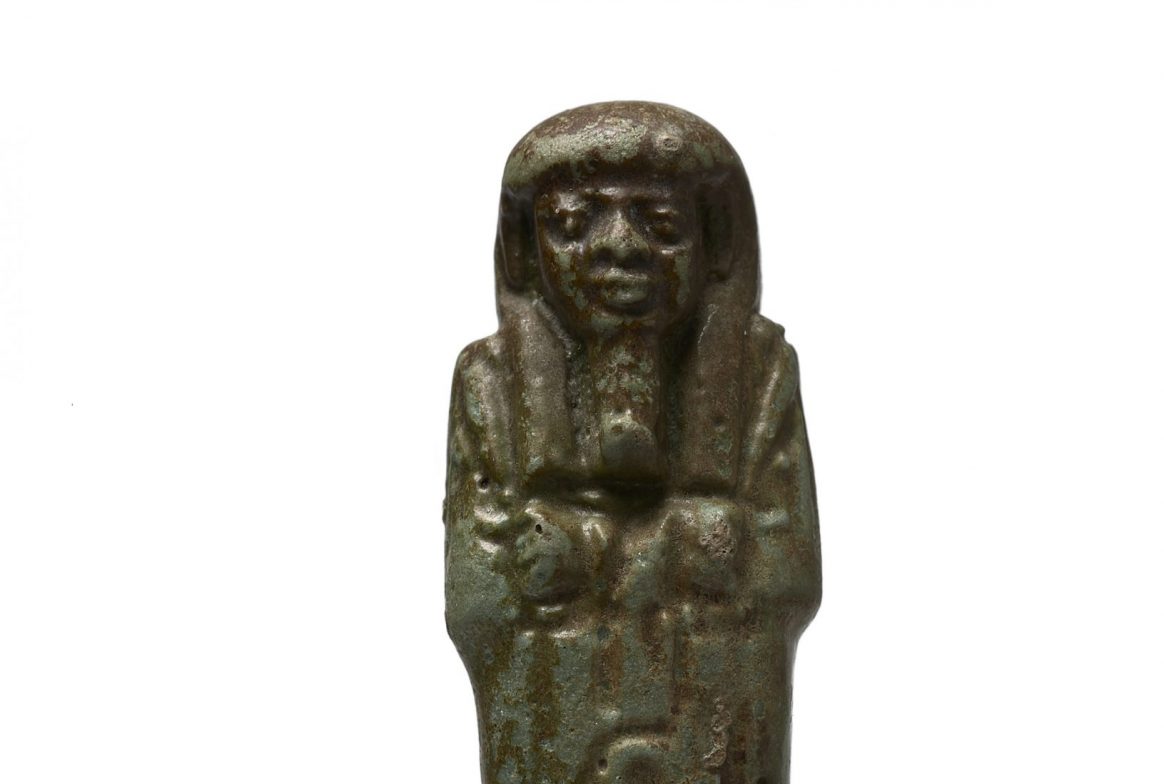
Shabti
This shabti (figurine) is made from faience, the oldest type of glazed ceramic. Shabti were must-have burial items from the New Kingdom (1550 - 1070 BC) onwards.
Ancient Egyptians purchased shabtis for their tombs in the hope that they would work for them in the afterlife. Spells were sometimes written in hieroglyphics on the body of the shabti, to be read in the afterlife when the shabti was needed, and bring it to life.
Pharaohs could be buried with hundreds of shabti. Shabtis sometimes hold the tools to carry out tasks in the afterlife. What kinds of tools do you think they might need?
Ancient Egyptians purchased shabtis for their tombs in the hope that they would work for them in the afterlife. Spells were sometimes written in hieroglyphics on the body of the shabti, to be read in the afterlife when the shabti was needed, and bring it to life.
Pharaohs could be buried with hundreds of shabti. Shabtis sometimes hold the tools to carry out tasks in the afterlife. What kinds of tools do you think they might need?

Stone Stela
A stela is a funerary slab. In this stela, the names of the four people pictured are written above their heads. They are shown smelling Lotus flowers. In the ancient Egyptian story of Creation, the sun rose from a lotus flower and became a symbol of rebirth.
The women shown in this stela are wearing cones of beautiful smelling perfume, made of scented animal fat, on top of their heads. The text below the figures is known as an 'Offering Formula'. We think it reads: 'An offering, which the king gives to Osiris, the head of the Westerners (the dead), the great god, ruler of everlasting time. May be given offerings of bread, beer, oxen, fowl, clothing, incense, oil, all good, pure things, on which a god lives, for the ka of Nebmehyt (man on left) and Pa-Men-Neferwadju (women on left).' Who might these people have been?
The women shown in this stela are wearing cones of beautiful smelling perfume, made of scented animal fat, on top of their heads. The text below the figures is known as an 'Offering Formula'. We think it reads: 'An offering, which the king gives to Osiris, the head of the Westerners (the dead), the great god, ruler of everlasting time. May be given offerings of bread, beer, oxen, fowl, clothing, incense, oil, all good, pure things, on which a god lives, for the ka of Nebmehyt (man on left) and Pa-Men-Neferwadju (women on left).' Who might these people have been?
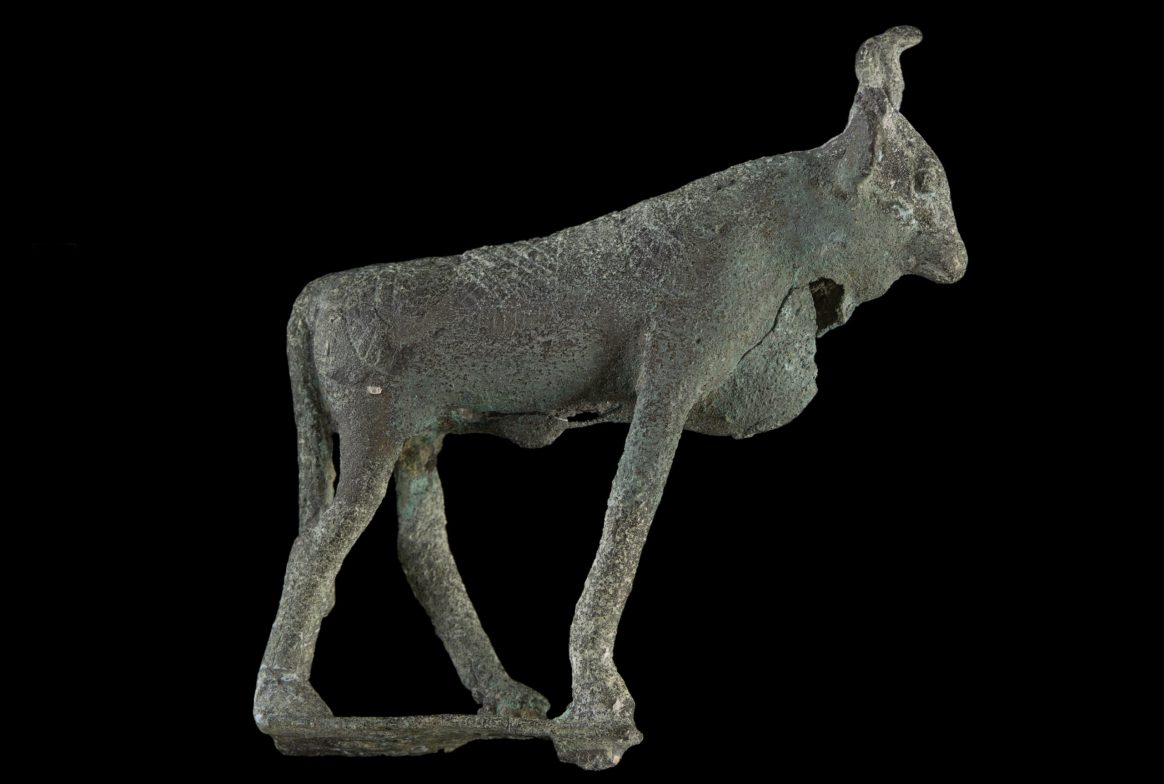
Votive Figurine: Apis
This figurine, made from copper alloy, was probably made using the ‘lost wax process’, a complicated metal casting process, using a mould sculpted from wax.
The copper needed for these figurines would likely have been mined in the Eastern desert, the Sinai region, and Nubia to the south of Egypt.
Votive figurines were offered to a particular god as part of a vow. This bull represents Apis, a god associated with fertility in farming. Today, some Egyptologists consider Apis to be the most important of the animal gods. Why do you think this is?
The copper needed for these figurines would likely have been mined in the Eastern desert, the Sinai region, and Nubia to the south of Egypt.
Votive figurines were offered to a particular god as part of a vow. This bull represents Apis, a god associated with fertility in farming. Today, some Egyptologists consider Apis to be the most important of the animal gods. Why do you think this is?
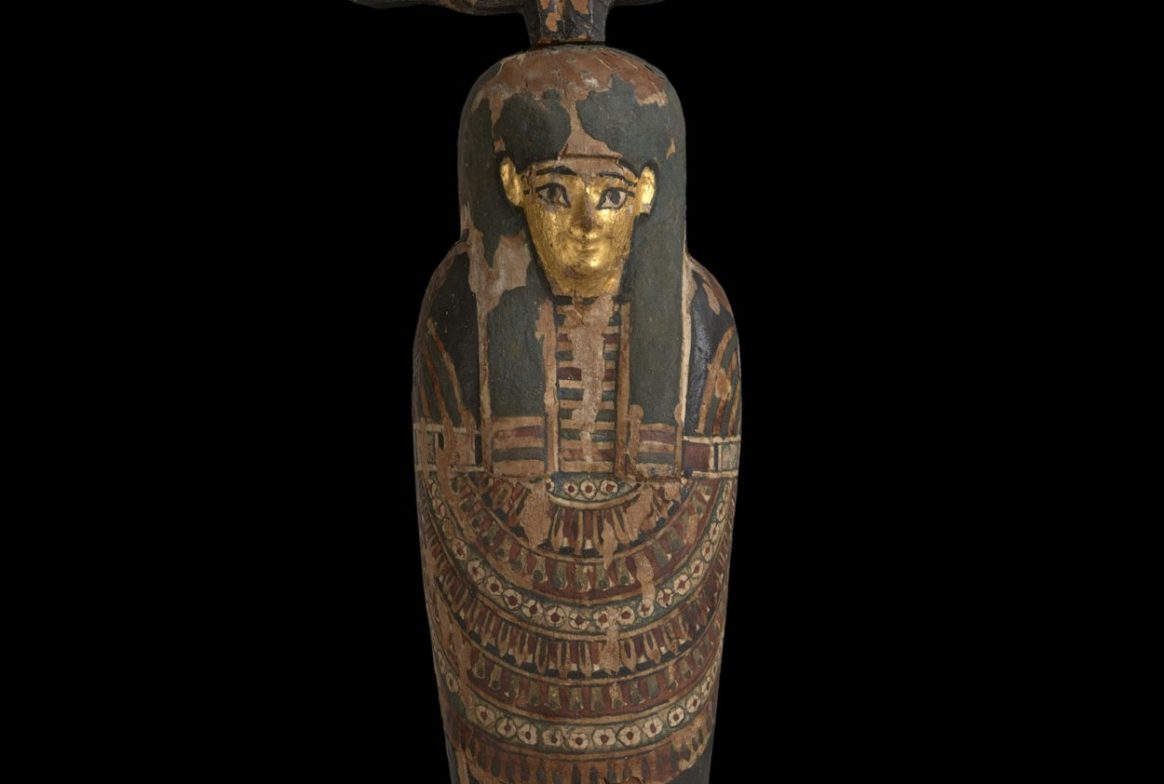
Ptah-Sokar-Osiris
This hollow figurine would have been used to hold a spell or religious text carefully written on papyrus and would have been placed in a wealthy person's tomb.
It is made up of three different deities: Ptah, the creator god of Memphis in Lower Egypt; Sokar, a hawk god; and Osiris, the god of the underworld.
These three gods were brought together as one during the Middle Kingdom (2055 – 1620 BC) and so the figurine has the headdress of ram horns, reeds, ostrich feathers and a sun disc. Can you spot these features on the headdress?
It is made up of three different deities: Ptah, the creator god of Memphis in Lower Egypt; Sokar, a hawk god; and Osiris, the god of the underworld.
These three gods were brought together as one during the Middle Kingdom (2055 – 1620 BC) and so the figurine has the headdress of ram horns, reeds, ostrich feathers and a sun disc. Can you spot these features on the headdress?

Winged Scarab
This beautiful blue, winged scarab is made from faience, the oldest type of glazed ceramic.
Scarabs are modelled on the dung beetle, an insect which lays its eggs in animal dung and rolls it across the ground. The god Khepri was shown as a scarab beetle, and brought life by rolling the sun across the sky. Newly hatched beetles emerging from the dung were also linked to rebirth, an important part of ancient Egyptian's religion.
The heart scarab was an extremely important amulet that was often placed on the chest of a mummified person, over their heart. 'Heart Scarabs' sometimes have spells underneath, protecting a person's heart from evil, or from speaking evil during the Weighing of the Heart ceremony. This ceremony determined if the deceased was allowed to pass to the afterlife. If the heart made a guilty confession, it would be devoured by the god Ammit. Do you have a charm that helps you to feel safe, or protected?
Scarabs are modelled on the dung beetle, an insect which lays its eggs in animal dung and rolls it across the ground. The god Khepri was shown as a scarab beetle, and brought life by rolling the sun across the sky. Newly hatched beetles emerging from the dung were also linked to rebirth, an important part of ancient Egyptian's religion.
The heart scarab was an extremely important amulet that was often placed on the chest of a mummified person, over their heart. 'Heart Scarabs' sometimes have spells underneath, protecting a person's heart from evil, or from speaking evil during the Weighing of the Heart ceremony. This ceremony determined if the deceased was allowed to pass to the afterlife. If the heart made a guilty confession, it would be devoured by the god Ammit. Do you have a charm that helps you to feel safe, or protected?
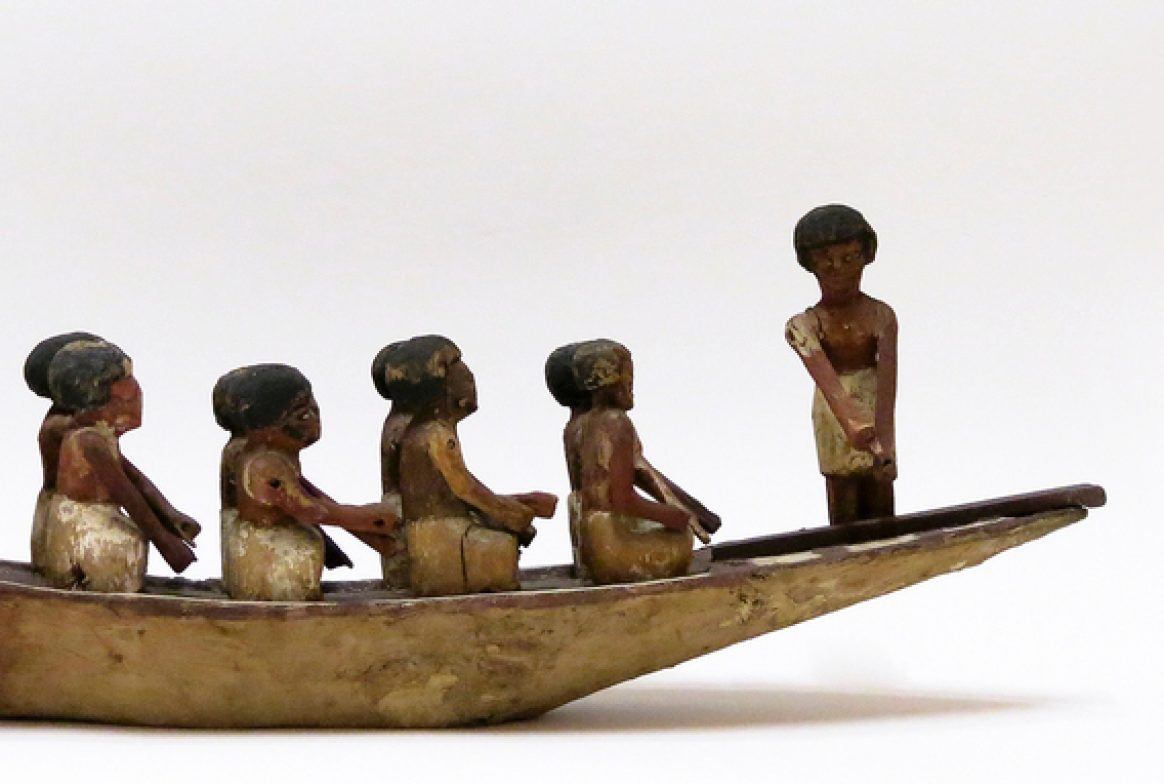
Model Boat
This wooden model boat shows ten seated rowers. Ancient Egypt takes its name from the River Nile and could not have existed without it. The Ancient Egyptians understood how important the river was for life.
The Ancient Egyptians called their land Kemet, meaning Black Land, because of the rich, dark and fertile clay left behind after the Nile flooded. The Nile was the main route through Egypt and boat-building was a major industry.
Archaeological evidence, temple and tomb inscriptions, give some idea of the many different types of boats that were made – from huge boats which transported obelisks from Aswan in Southern Egypt, smaller vessels which carried grain and food, to state ships which carried Pharaohs and officials.
Boats were also common tomb offerings, representing the deceased’s journey in the afterlife. What do you imagine this model boat was for? A toy? To be placed in a tomb?
The Ancient Egyptians called their land Kemet, meaning Black Land, because of the rich, dark and fertile clay left behind after the Nile flooded. The Nile was the main route through Egypt and boat-building was a major industry.
Archaeological evidence, temple and tomb inscriptions, give some idea of the many different types of boats that were made – from huge boats which transported obelisks from Aswan in Southern Egypt, smaller vessels which carried grain and food, to state ships which carried Pharaohs and officials.
Boats were also common tomb offerings, representing the deceased’s journey in the afterlife. What do you imagine this model boat was for? A toy? To be placed in a tomb?
